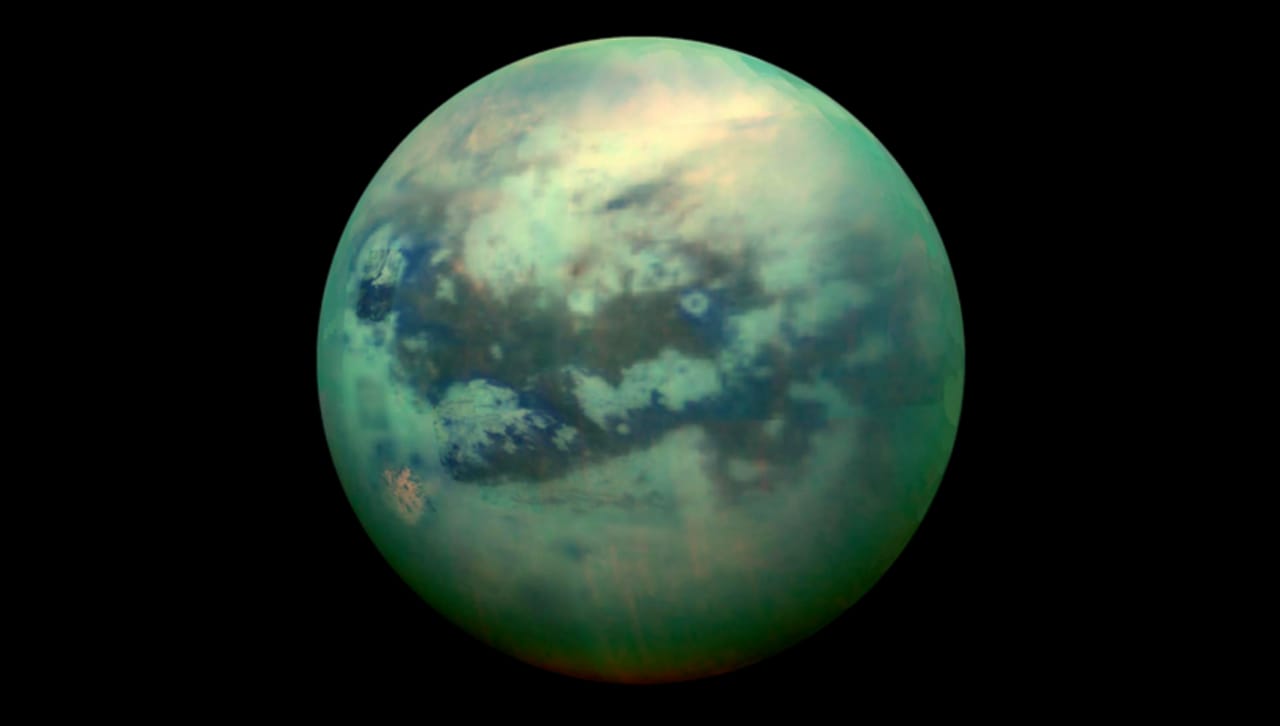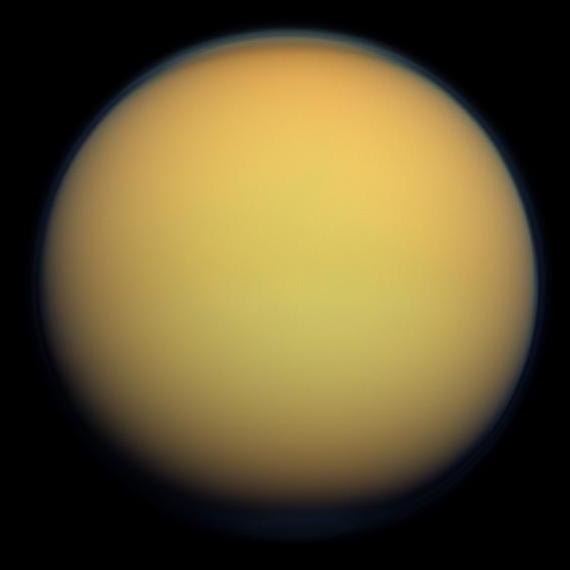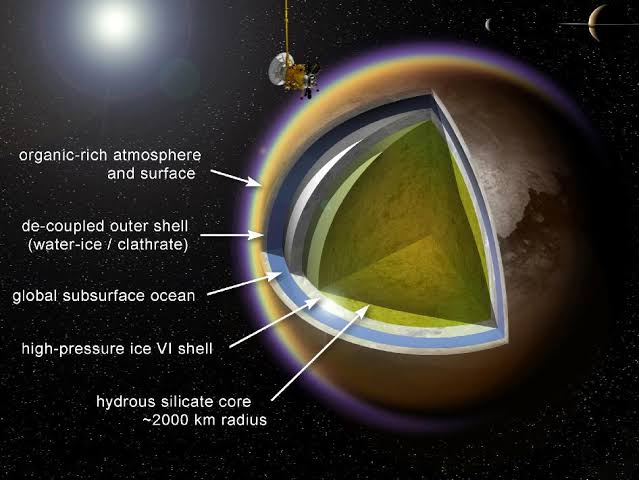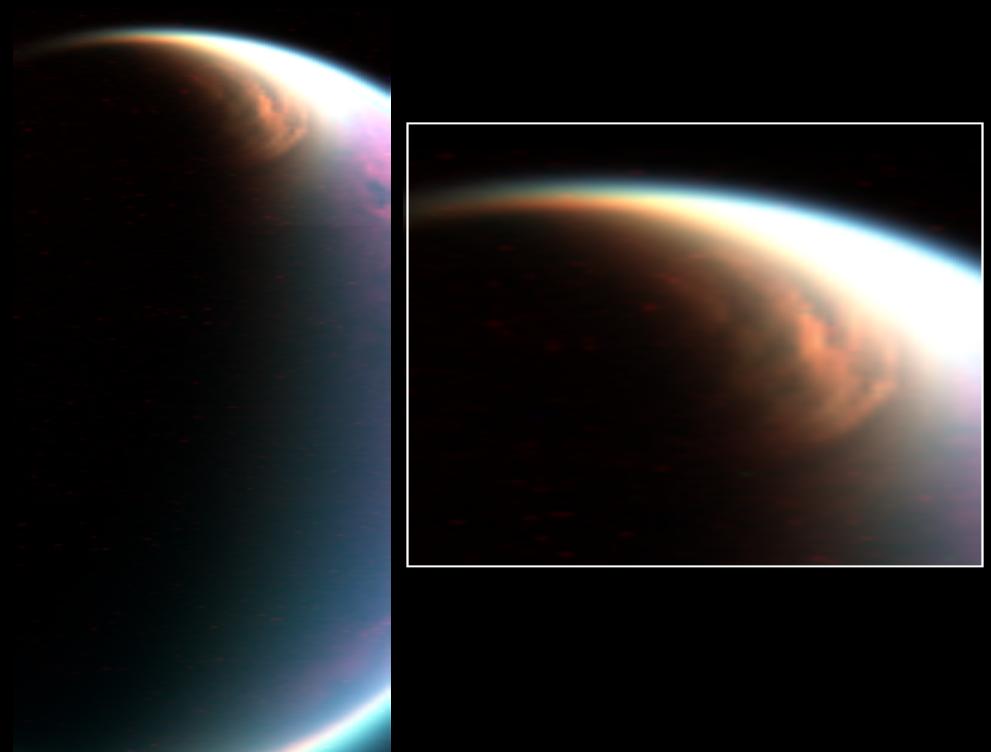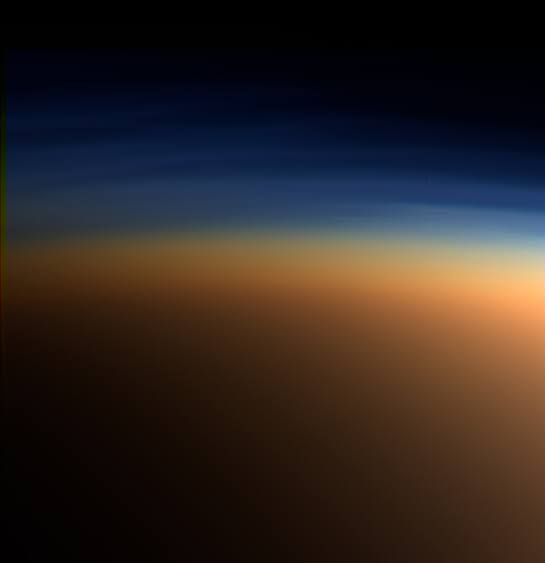The solar system and its vast expanse are beyond imagination. The number of the planet it holds, the number of smaller planets it has, their moons gives way to a wide range of possibility as to where life can take place. Extensive researches have been going on in recent times regarding which of these celestial bodies is a candidate where life can be supported.
Since ages when we got to see in space and started discovering the space, new revelations have come forward and they will continue to arise. One such question which we are looking for the answer for is whether there is a planet in our solar system which supports life or not.
Numerous planets are in the research range while there are some moons as well in this list. One of those moons is Titan. It is the largest moon of the sixth planet in our solar system i.e. Saturn.
In this article, we will come to know, What happens if we settle on Saturn’s moon, Titan? and many more questions regarding Titan would be answered.
What is the Titan?
For starters, Titan is the largest moon of the sixth planet from the Sun, Saturn. It is an icy planet whose surface is bounded by a hazy golden atmosphere. Regarding its size, Titan is bigger than our Earth’s moon and is the second-largest moon in our solar system.
This huge moon is a level apart from all its counterparts. It is considered quite a different moon due to several reasons. To know, what these reasons are, stay tuned with this article and we will tell you why Titan is special! Titan was discovered in 1665 by Dutch astronomer Christian Huygens.
Inspired by the discovery of four moons by Galileo Galilei in 1610, he improved his technology and found out about this moon. It was one of the first moons to be discovered in outer space after the moons of Jupiter. Formerly, it was named Saturni Luna meaning Saturn’s moon but soon after the discovery of more moons of Saturn, it was named Titan.
What makes Titan different? Why is Titan so special?
Didn’t you want to know why Titan is considered different from other moons and why is it a possible candidate for supporting life? Let us tell you the real truth behind it!
This huge celestial body has a thick dense atmosphere much like that of Earth. Additionally, it is the only celestial body apart from our Earth with sources of liquid water such as rivers, lakes and seas on its surface. Apart from this, it has a much similar atmosphere to Earth’s.
It also has nitrogen in the majority just like Earth with small amounts of methane gas. Not only this, it is the only world with a cycle of processes matching Earth. Processes like the water cycle are followed on Titan albeit in a bit different way and it is believed that it also has an ocean of water.
All these reasons make Titan a world much similar to our Earth and make it stand apart from the others.
What is the size of Titan?
As already said, Titan is Saturn’s largest moon and has a radius of about 2575 kilometres and is 50% wider than our moon. It is also the second-largest moon in our solar system after Jupiter’s Ganymede. It is even bigger than the planet Mercury.
Titan is 1.2 million kilometres away from Saturn, while Saturn itself is 1.4 billion kilometres away from the Sun. Thus, light from the Sun takes about 80 minutes to reach Titan. This distance causes the sunlight to be much fainter on Titan as compared to Earth. Numerically, it is about 100 times fainter than the Earth.
Titan takes 15 Earth days and 22 Earth hours to complete one revolution around Saturn. Just like Earth’s moon, Titan is tidally locked in synchronous rotation with Saturn, which means it shows the same face to the planet as it orbits the planet. Since the tilt of Saturn and Titan are almost similar and Titan orbits Saturn along the same equatorial plane, thus they both have similar seasonal variations.
Thus, Saturn which takes 29 Earth years to complete one revolution around the Sun, has seasons that are longer than seven Earth years. The same happens on Titan.
How did Titan form?
Although there aren’t certain strong proofs regarding the formation or origin of Titan, its atmosphere provides a rough explanation to the question. The missions to Titan revealed the amounts of isotopes of Nitrogen in the atmosphere.
It matched quite a lot to the comets from the Oort cloud, which is a sphere of icy bodies believed to orbit the Sun at a distance of roughly 5000 to 100,000 Astronomical Units.
This suggests that it originated from the same cold disk of gas and dust from which the Sun was formed, different from the warmer disk by which Saturn was formed.
What is Titan’s structure and how is its surface?
According to the models by the Cassini Huygens mission, Titan has a five-layered structure. The innermost layer is a rocky core which is about 4000 kilometres in diameter. Outside it is a shell of water ice.
You must be thinking what is water ice? Water ice is a special type of ice that is found only at high pressures. This layer is surrounded by a layer of salty water in a liquid state, outside which again is a layer of water ice. Outside this is the main surface which is covered by sands and liquid bodies.
The surfaces of Titan are widely regarded as quite Earth-like disregarding the extremely low temperatures. The average temperature of the moon is around -180 degrees Celsius.
It has strange volcanic activities with liquid water lava flowing out instead of the molten rocky lava. It is highly rich in liquid activity with gases like methane and ethane paving river channels through which liquids flow. Apart from Earth, no other planet has liquid activities like this.
Apart from this, a vast region of dark sand dunes has been found on its surface, majorly in the regions near the equator. The sand is majorly dark hydrocarbon grains and is quite different from the ones found on Earth.
The atmosphere of Titan
The most stand-out thing about Titan is its atmosphere. Of the 150 known moons in our solar system, Titan is the only one to have a thick atmosphere. At the surface, the pressure is about 60% on the surface of Earth.
Since the size is smaller, the gravity doesn’t hold onto the atmosphere tightly and thus is around 10 times higher than that of Earth – at a height of 600 kilometres.
Here is a big part. We know our Earth’s atmosphere has nitrogen in the majority. Similarly, Titan also has nitrogen in the majority with small amounts of methane and other carbon compounds.
Sun’s light splits apart the methane and nitrogen molecules and accelerates them to high speeds and forms a variety of organic compounds which are essential for supporting life.
These compounds formed to make a thick haze which makes the surface very difficult to view from space. A lot of things that happen on Titan are possible due to the methane. But where this methane comes from is still a mystery.
Have there been any missions to Titan?
Launched on October 15th 1997, the Cassini spacecraft arrived at Saturn on June 30th 2004. As soon as it reached, it dropped the Huygens probe to study Titan.
It landed on Titan on January 14th 2005 and studied the moon and gave some exciting information. The mission was a huge success and took the highest resolution images of the Titan’s surface.
It studied the composition of its atmosphere and its organic chemistry due to which scientists concluded that there might be an internal ocean under the surface. It was also lucky enough to experience a seasonal change that occurs after more than seven Earth years.
Over the 13 long years of exploration, the Cassini Huygens mission made 127 encounters with the moon. The mission finally wrapped up in 2017 after completing two decades on Saturn.
| What happens if we terraform Venus? |
| What happen if we successfully terraform mars? |
| What will the first human settlement on Mars be like? |
Can Saturn’s moon, titan support life?
The biggest question that arises and which is still to be answered is whether Can Saturn’s moon, titan support life or not? According to beliefs and facts, Titan could be more habitable in the future.
Some models suggest that if the Sun increases its temperature and becomes a red giant Titan can temperatures suitable for liquid oceans. But mind you, even according to these models, it is not in near future. The increase in temperature is expected to be in 6 billion years from now.
So, nowhere soon is it possible, but if it happens, the conditions could be much like Earth. The research conducted by the Huygens probe revealed the presence of an ocean 55 to 80 kilometres under the surface.
There are only a handful of planets or celestial bodies which could have habitable environments. Additionally, the presence of liquid sources suggests that it could potentially harbour environments for the presence of life. Though there aren’t any sources of evidence of life on Titan all these specialities make it a firm contender for further exploration.
Conclusion
Titan is the second-largest moon and the largest moon of Saturn. It is far away from our Earth, nearly a billion kilometres away. Several things make this moon different from the other ones we know. The presence of a thick atmosphere like that of Earth, the presence of liquid sources like rivers and lakes, presence of an under-surface ocean, all these things make it a candidate for further explorations. The Cassini Huygens mission revealed some crucial information regarding its surface and has been of great importance to the research.
So, I hope you enjoy my article, (What if we settle on Titan, Saturn’s moon?) Now, if you have any questions, concerns, or doubts, please post them in the comments box below.
FAQ related to (Saturn’s moon, Titan)
Q- Does Titan have oxygen and water?
Ans- Sadly, Titan has no free oxygen available. It also has rivers, lakes and seas of liquid but not of water but liquid methane and ethane. But it is expected that the surface of Titan hides under itself an ocean of liquid water.
Q- Can we breathe on Titan?
Ans- Titan is cold, cold enough that we would need respirators for breathing oxygen since it has no free oxygen available.
Q- Can life be made possible in near future?
Ans- Titan has an average temperature of -180 degrees Celsius. Reducing this temperature for living on it, would take hundreds or thousands of years. Thus, living on Titan or life on Titan is still a faraway possibility.
Q- How far is Titan from the Earth?
Ans- Roughly saying, Titan is about a billion kilometres away from our Earth. Covering this distance would require a minimum of seven years.
Q- Which is the biggest moon in our solar system?
Ans- Ganymede is the largest and most massive moon in our solar system. It has a diameter of around 5300 kilometres and is just 2% larger than Titan.
